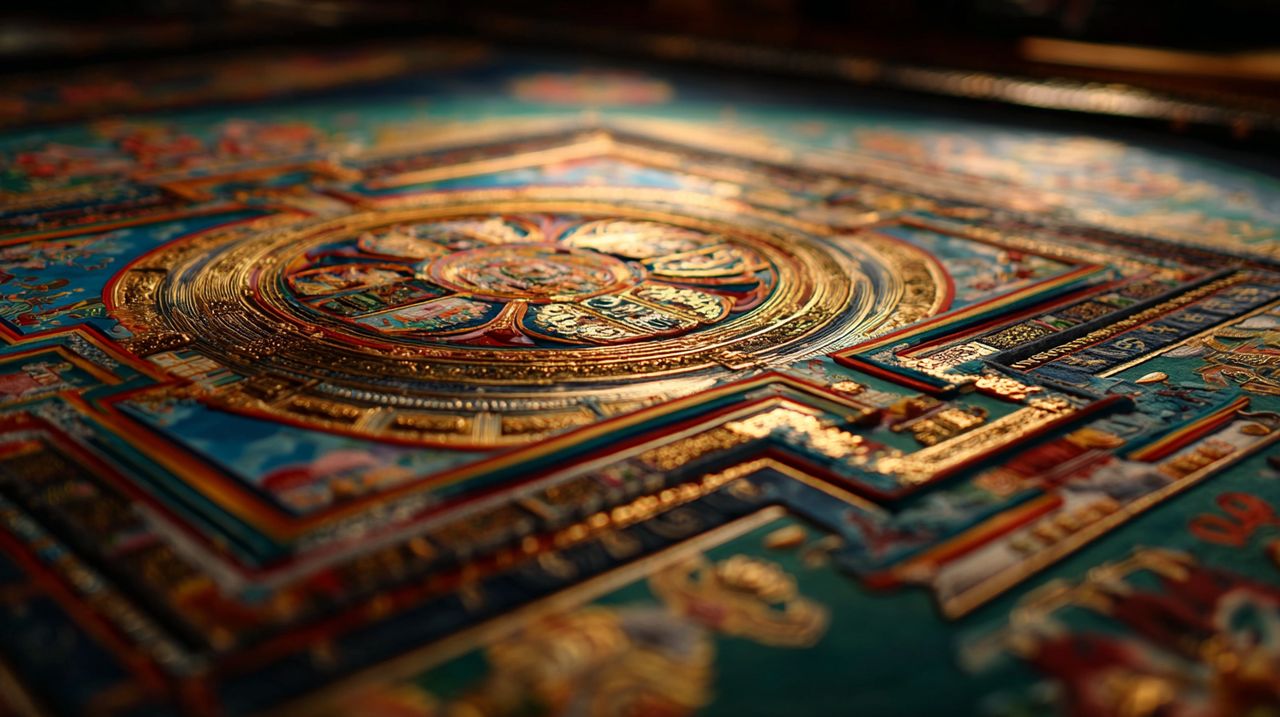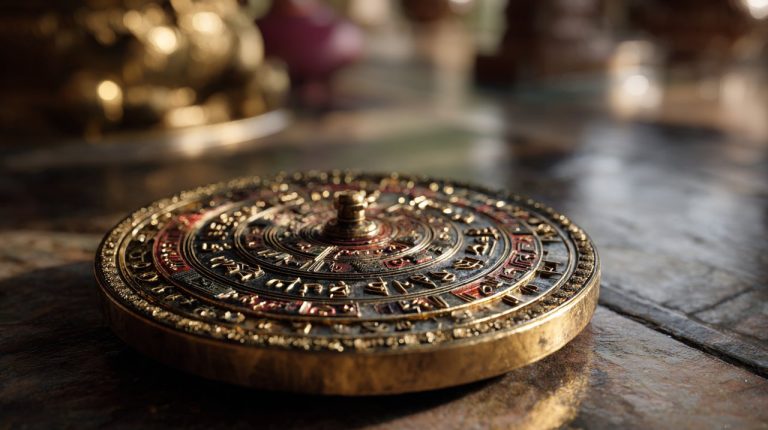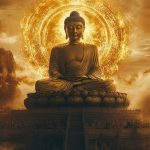Understanding Deities in Buddhism: Concepts, Roles, and Key Figures Explained
When we hear the words “gods and goddesses,” what images first flicker in our minds? Perhaps grand creators, or mighty rulers shaping destiny. This idea might feel distant from the heart of Buddhist teachings, which often speak of self-reliance and the flow of impermanence.
Yet, within Buddhism, these figures hold a place—not as external deities dictating our lives, but as echoes of deeper truths, reflecting wisdom and compassion.
Beyond Divine Creators: The Buddhist View of Deities
At its heart, Buddhism offers a path towards liberation, gently guiding us towards self-reliance and a clear understanding of impermanence and non-self (Anatta). This journey often differs from other spiritual traditions, as it doesn’t speak of a creator God or gods who design our every step.
Instead, the figures we sometimes call “gods” in a Buddhist landscape are more like reflections. They represent various states of being, powerful symbolic qualities, or the very principles of awakening itself.

Impermanence and Karma: The Nature of Celestial Beings
Buddhist thought reminds us that all things, even the most radiant beings, are without an unchanging self. This gentle truth extends even to the celestial realms.
Those we might call celestial beings, or devas, also move within the flow of karma and rebirth, much like a leaf carried by the stream. Their lives, though often filled with immense joy and lasting ages, are not forever; they too are part of life’s ever-changing dance.
In Buddhism, even devas (celestial beings) are not eternal; they too are part of samsara, driven by karma, and will eventually experience rebirth into other realms.
Symbolic Archetypes, Not Absolute Rulers
Here, these figures are not absolute rulers, but rather powerful symbols of awakened qualities. Think of them as mirrors reflecting compassion, wisdom, or skillful means.
They are archetypes, offering a focal point for our own meditations, helping us to nurture these same qualities within. We don’t worship them as creators; instead, we hold them in reverence as guiding examples on our own path.
A Spectrum of Sacred Roles: From Devas to Bodhisattvas
As we wander through the expansive understanding of buddhist cosmology, we meet various beings sometimes spoken of as “gods” or “goddesses.” Each holds a distinct role, much like the different facets of a crystal catching the light, reflecting the depth of Buddhist teachings.
These figures often appear in the intricate patterns of mandalas or thangkas, offering visual guidance for our spiritual journey.

Devas: Transient Inhabitants of Higher Realms
Devas are beings who dwell in higher celestial realms, living lives of great joy and extended duration, shaped by their past positive karma. Yet, like all things in the forest, their existence, too, is part of Samsara – the flowing cycle of suffering.
They are not enlightened, nor do they offer ultimate refuge, though they may sometimes touch upon human affairs.
Bodhisattvas: Embodiments of Compassion and Wisdom
A bodhisattva is an awakened being who, moved by a vast, boundless compassion, chooses to delay their own ultimate liberation. They do this to remain with us, guiding all sentient beings towards freedom.
We look to them as guides and living reflections of virtues, such as the clarity of wisdom (Prajna) and heartfelt compassion (Karuna). Their gentle presence inspires and supports others on the path to awakening, much like a steady light in the mist.
Protectors and Wisdom Deities in Vajrayana
Within Vajrayana Buddhism, especially in Tibetan traditions, a vibrant collection of deities takes on vital roles. These include Yidams, who serve as meditation deities, Dakinis, embodying female wisdom, and Dharma Protectors.
These figures are not external deities. Instead, they are seen as manifestations of the practitioner’s own awakened mind, used in tantric practices to transform difficult emotions and uncover the deepest truths.
Revered Figures: Key Deities Across Buddhist Traditions
Across the many streams of Buddhist schools, certain figures shine brightly, holding deep meaning and widespread reverence. To understand them is to gain a clearer glimpse into the heart of Buddhist teachings.
Here, we meet some of these guiding lights:
- Avalokiteshvara: The Heart of Compassion: Known as Chenrezig in Tibetan Buddhism and Guanyin in East Asia, Avalokiteshvara is perhaps the most cherished bodhisattva. Often pictured with many arms and heads, this symbolizes an infinite capacity to see and ease suffering. Avalokiteshvara embodies the very essence of active compassion, like a gentle rain nourishing dry earth. Mantras such as “Om Mani Padme Hum” are a call to this compassionate presence.
- Manjushri: The Sword of Wisdom: Manjushri reflects transcendent wisdom, frequently shown with a flaming sword that cuts through the mists of ignorance, and a book (Prajnaparamita Sutra) representing enlightened knowledge. Meditating on Manjushri helps us sharpen our discernment and understanding, much like honing a blade, which is vital for realizing awakening.
- Tara: Swift Liberator and Protector: Tara is a revered female Buddha, especially prominent in Tibetan Buddhism. She is seen as a savior who comes quickly to the aid of those who call upon her. Her 21 forms reveal different aspects of awakened activity, from calming fears to granting spiritual insight. She embodies fearless action and a mother’s deep compassion, like a strong, ancient tree offering shade and shelter.
- Mahakala: Fierce Guardian of the Dharma: Mahakala is a protector deity, appearing in a wrathful form. This fierce manifestation of Avalokiteshvara’s compassion is not evil, but represents the powerful clearing of obstacles on the spiritual path and the safeguarding of the Dharma from inner and outer hindrances. His awe-inspiring appearance is meant to subdue negative forces and awaken a deep respect.

Cultivating Inner Wisdom: The Practitioner’s Path
Deities as Mirrors for Self-Cultivation
Think of a figure like Manjushri, whose luminous sword represents cutting through the shadows of ignorance. For those on the path, meditating upon Manjushri isn’t about bowing to an external power.
It’s about invoking and strengthening our own innate capacity for wisdom, like tending to a hidden spring within. The deity becomes a clear mirror, reflecting the potential for awakening that already resides within each of us.
The Journey Towards Enlightenment
By quietly engaging with these concepts, we can deepen our understanding of compassion, wisdom, and the ever-changing nature of all things. It is an invitation to explore the vast spiritual terrain of Buddhism, discovering inspiration and gentle guidance for our own growth, leading towards enlightenment.
This journey fosters a deeper sense of connection with ourselves and the world around us, opening us to inner peace and a life truly awake. It reminds us that the wisdom we seek is often reflected in the world, waiting for us to simply observe and understand.
💡 Frequently Asked Questions
Unlike religions that posit a creator God, Buddhism emphasizes self-reliance and the understanding of impermanence. Figures sometimes referred to as 'gods' in Buddhism are not seen as external creators dictating destiny, but rather as reflections of deeper truths, symbolic qualities, or principles of awakening.
Buddhist teachings state that even celestial beings (devas) are not eternal. They are subject to the cycle of karma and rebirth (Samsara), meaning their existence, though often long and joyful due to past good karma, is impermanent and they will eventually experience rebirth into other realms.
Bodhisattvas are awakened beings who, out of immense compassion, choose to delay their own final liberation to guide all sentient beings towards awakening. They are revered as guides and embodiments of virtues like wisdom and compassion. Devas, on the other hand, are transient inhabitants of higher realms whose existence is still within Samsara and who are not yet enlightened.
In Vajrayana Buddhism, figures like Yidams, Dakinis, and Dharma Protectors are not seen as external deities. Instead, they are considered manifestations of the practitioner's own awakened mind. They are utilized in tantric practices to help transform difficult emotions, uncover deepest truths, and clear obstacles on the spiritual path.
Meditating on deities like Manjushri, who symbolizes transcendent wisdom, is not about worshipping an external power. It's about invoking and strengthening one's own innate capacity for wisdom. Manjushri's attributes, such as the sword cutting through ignorance, serve as a mirror to cultivate discernment and understanding within oneself.







